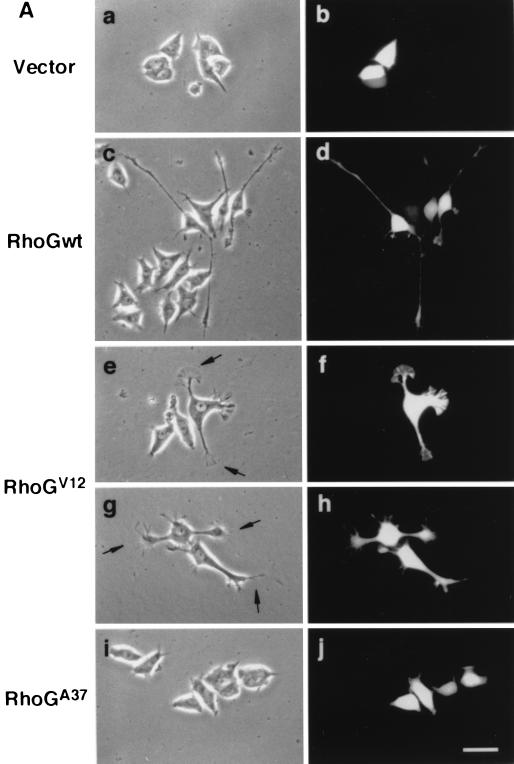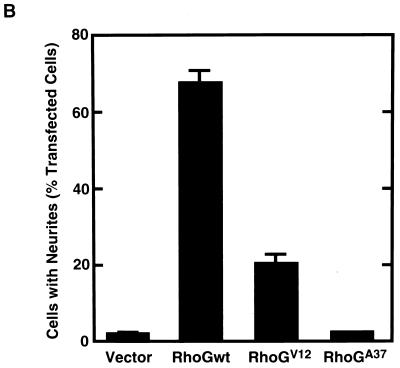FIG. 1.
Effect of expression of wild-type RhoG and various RhoG mutants on PC12 cell morphology. (A) PC12 cells were transiently cotransfected with an expression vector encoding GFP and an empty vector (vector; a and b) or an expression vector encoding Myc epitope-tagged wild-type RhoG (RhoGwt; c and d), RhoGV12 (e to h), or RhoGA37 (i and j). At 48 h after transfection, cells were observed under the phase-contrast microscope (a, c, e, g, and i). Transfected cells were identified by the fluorescence of GFP (b, d, f, h, and j). Arrows (e and g), large lamellipodial (e) and filopodial (g) structures at the tips of neurites. The results shown are representative of three independent experiments. Bar, 25 μm. (B) Quantification of neurite outgrowth induced by various RhoG mutants. At 48 h after transfection, cells were stained with an anti-Myc antibody, and positively stained cells were assessed. Cells with neurites were defined as cells that possessed at least one neurite more than 1 cell body diameter in length, and results are percentages of the total number of transfected cells. At least 100 cells were assessed in each experiment, and data are the means ± standard errors of triplicate experiments.


